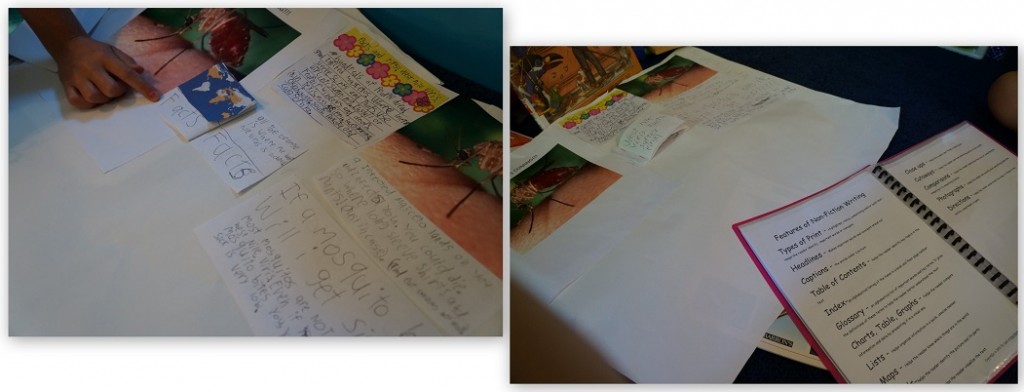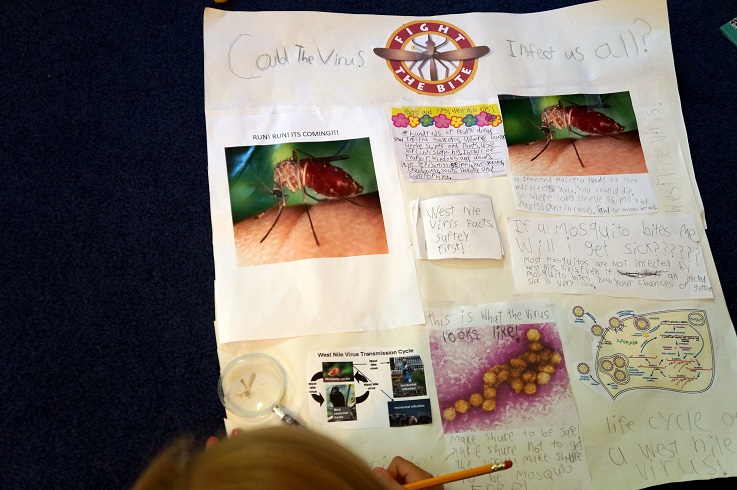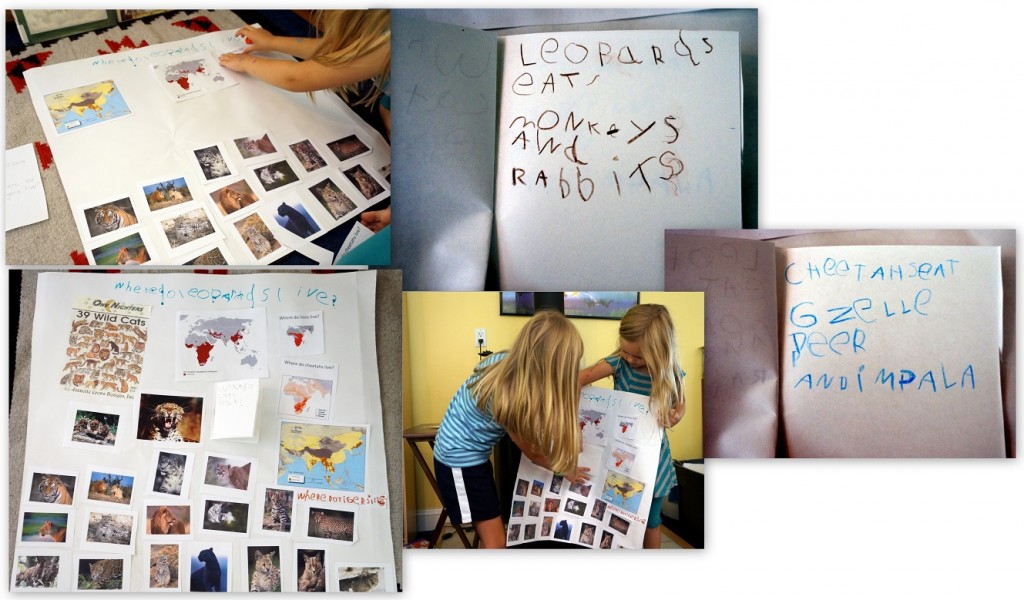Free CDC Lesson Plans Grades 4-8 — Science Ambassador Program
Over the summer, I stumbled across the Center for Disease Control’s Science Ambassador Program. What a great find! It has a series of lessons (maybe mini-unit would be a better term for them) on all kinds of various topics with challenging activities for students to learn about. Topics include — autism, birth defect, Hantavirus, HIV/Aids… and many more. What I like about their lessons is that they require the students to research and find out more on their topic… and then the students are given a scenario (or series of scenarios) where they have to apply what they learned. Each unit has about 25-30 pages of materials.
We decided to start off the school year doing one of those research units on the West Nile Virus. You can choose from two levels — Middle School and High School. We loosely followed the Middle School Lessons: Entomologists on Safari: On the Hunt for Mosquitoes. (Note: The high school lesson plans are here: West Nile Virus Strikes Again) I handed the kids a lot of the printouts and basically told them to read through it, do the research and that their final projects (a poster) was due by Friday at 2pm.
WHAT?!!
I really hadn’t been that hands-off with a research project before, but the CDC lessons were so well laid out with guide questions and instructions for the poster that I really wanted to see how the kids would handle it. For example, on one page there were guide questions such as
1. What are the symptoms of West Nile virus?
2. How does West Nile virus spread?
3. How soon do infected persons get sick?
4. What is the treatment for West Nile virus?
5. How can West Nile virus be prevented?
And, the lesson plans included specific links to where they could find out more. DD and LD took it in stride and immediately set out to do some research and start working on the poster. I let them work for several days… and they really did a lot of work find out some of the basics about the virus and how it spreads…
Then one morning several days into the project I took the opportunity to talk about some of the conventions of non-fiction writing.
We looked at some non-fiction books and talked about using different types of print to highlight important/key points and some of the other features used in non-fiction writing like tables, lists, graphs, cutaways, comparisons, charts, diagrams, maps and things like that. I had them look at their own poster and asked them to think about how they could make it more visually appealing… and what graphics could help the reader understand the material better.
They really took a lot of that information on — and added to their poster. Aside from that mini-lesson, the kids did everything themselves. At 2pm on Friday, they had to stand up and give a presentation on what they had learned and answer questions from their audience (–me!).
Overall, I think they spent about 7 hours working on their own doing research and writing things up.
They learned a lot about the process of researching, presenting information clearly, sticking to the important key points — and making sure they could speak about their topic knowledgeably. I was pretty proud of the hard work they put into this unit.
Oh–and by the way–Auntie G out in California had West Nile Virus about a year ago and was SO SO SO sick for a LONG, LONG time!! She’s better now, but it took her doctors a long time to determine just why she was so ill.
Be sure to visit the CDC website — Science Ambassador Program — to find out more about the free science units they have available for Middle School and High School Students. You may also want to visit our posts on the other CDC units we did: Pets & Pet Diseases (Zoonoses) and Rabies).
Meanwhile… ED (age 5) begged to do a poster project as well. I happened to have some wild cat pictures I had once printed out (for a lapbook that never got made!)… pictures of leopards, tigers, lions, etc. She cut out all the pictures and then we worked together to find out where these cats live and what these wild cats ate. I helped her write her own mini-book that gave a couple examples of what each of the wild cats ate. She also stood up and “presented” her project to the others. 🙂
Anyway, I wanted to share her “poster” because I so often get asked what ED is doing while the others are working. She almost always wants to participate and do her own work. (And when she doesn’t… that’s totally okay too!!)
Above, I mentioned lapbooks — you might want to click here to see some of the lapbooks that the kids have actually made!
You might be interested in these other CDC Science Ambassador Units:
- Free CDC Lesson Plans: Science Ambassador Project: The project we did on the West Nile Virus
- Free Units on Pets and Pet Diseases – A different CDC Unit on Zoonoses
You might be interested in our other research projects:
- Animal Portfolio Project: Free Printable
- WWII Portfolio Project: Free Printable
- Biography Research Project: Free Printable
- Free Engineering Units: Grades 3-5, 6-8 From the Museum of Boston on topics such as urban landscape, engineering insulated homes, rockets, air drop packages and more
- Free Writing Workshop Resource Pack
- Creating a Homeschool Writing Workshop
If you find these useful, I’d love to hear from you here or over at my Homeschool Den Facebook Page. Don’t forget to Subscribe to our Homeschool Den Newsletter! ~Liesl

























































5 Responses
[…] website called the Science Ambassador Program. The kids did their own research and created their own poster project on the West Nile Virus. We’re doing one more unit (more about that probably later this week) because I just love […]
[…] Post: Free CDC Lesson Plans Grades 4-8: Science Ambassador Program and our unit on the West Nile Virus Add a […]
[…] Post: Free CDC Lesson Plans Grades 4-8: Science Ambassador Program and our unit on the West Nile Virus Add a […]
[…] and High School. We also did a unit on the West Nile Virus and this post tells you more about Science Ambassador Program (and their free lesson plans) put together by the CDC. Free Water and Water Cycle Resources – This is a post I put together with lots of colorful […]
[…] and High School. We also did a unit on the West Nile Virus and this post tells you more about Science Ambassador Program (and their free lesson plans) put together by the CDC. Free Water and Water Cycle Resources – This is a post I put together with lots of colorful […]